
John Obadiah Westwood was an English entomologist and archaeologist also noted for his artistic talents. He published several illustrated works on insects and antiquities. He was among the first entomologists with an academic position at Oxford University. He was a natural theologian, staunchly anti-Darwinian, and sometimes adopted a quinarian viewpoint. Although he never travelled widely, he described species from around the world on the basis of specimens, especially of the larger, curious, and colourful species, obtained by naturalists and collectors in England.

Graphium is a genus of mostly tropical swallowtail butterflies commonly known as swordtails, kite swallowtails, or ladies. Native to Eurasia, Africa, and Oceania, the genus is represented by over 100 species. Their colouration is as variable as the habitats they frequent; from rainforest to savannah. Some possess tails which may be long and swordlike, while others lack any hindwing extensions. Graphium species are often sighted at mud puddles.

William Westwood, also known as Jackey Jackey, was an English-born convict who became a bushranger in Australia.

Flower chafers are a group of scarab beetles comprising the subfamily Cetoniinae. Many species are diurnal and visit flowers for pollen and nectar, or to browse on the petals. Some species also feed on fruit. The group is also called fruit and flower chafers, flower beetles and flower scarabs. There are around 4,000 species, many of them still undescribed.

The Megaspilidae are a small hymenopteran family with 13 genera in two subfamilies, and some 450 known species, with a great many species still undescribed. It is a poorly known group as a whole, though most are believed to be parasitoids, and a few hyperparasitoids. Many are found in the soil, and of these, a number are wingless.

Epicopeiidae is a family of insects in the order Lepidoptera. They are known as oriental swallowtail moths as they closely resemble some oriental swallowtail butterflies. Epicopeiidae have highly varied structure in regards to body size and wing shape. Epicopeiidaen wing patterns are involved in complicated mimicry rings.
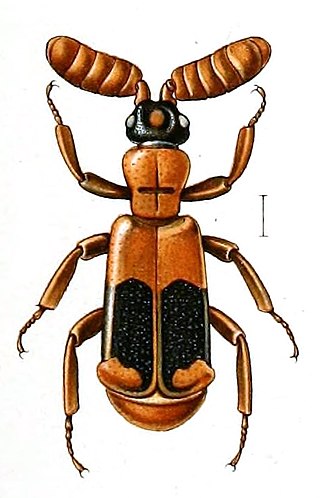
Ceratoderus is a genus in the beetle family Carabidae. There are about 11 described species in Ceratoderus.

Odontolabis is a genus of beetles belonging to the family Lucanidae.
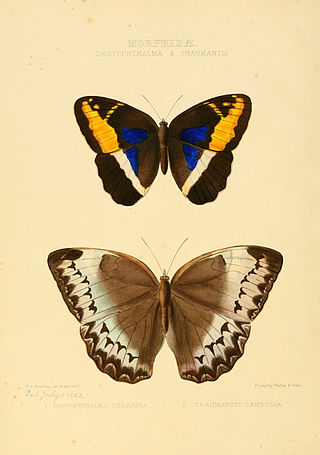
Stichophthalma is a genus of butterflies in the family Nymphalidae called jungle queens. The members are confined to India, China and Southeast Asia.

Epicopeia is a genus of moths in the family Epicopeiidae. The species in this genus mimic butterflies of the agehana-group in the genus Papilio and Atrophaneura alcinous.
Asthenotricha polydora is a moth in the family Geometridae first described by Hubert Robert Debauche in 1938. It is found in the Democratic Republic of the Congo, Rwanda and Uganda.

Streblote polydora is a moth of the family Lasiocampidae first described by Herbert Druce in 1887. It is found in Angola, the Democratic Republic of the Congo, Eritrea, Mozambique, South Africa, Tanzania and Zimbabwe.
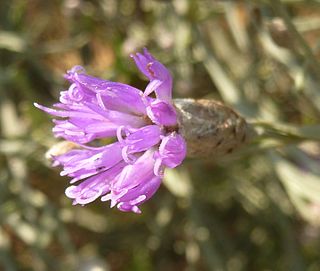
Polydora is a genus of plants belonging to the family Asteraceae, consisting of some 8 species. The genus is related to Vernonia and is native to Sub-Saharan Africa.
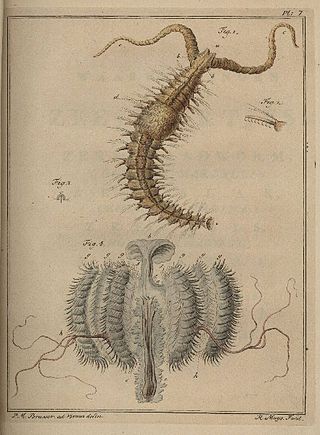
Polydora is a genus of annelid worms. It contains marine polychaete species that live in mud, holes bored in rocks, and holes bored in the shells of shellfish.
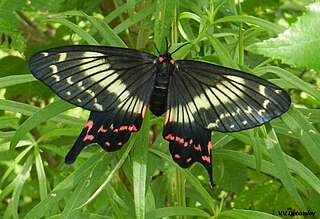
Epicopeia mencia is a moth in the family Epicopeiidae. It was described by Frederic Moore in 1875. It is found in China, Vietnam, Korea, the Russian Far East, Japan and Taiwan.
Epicopeia philenora is a moth in the family Epicopeiidae. It was described by John O. Westwood in 1841. It is found in India.
Epicopiopsis is a genus of moths in the family Epicopeiidae described by Karl Grünberg in 1908. The Global Lepidoptera Names Index has this genus as a synonym of Epicopeia.

Erucius is a genus of "monkey grasshoppers" in the family Chorotypidae. Species in this genus can be found in Vietnam and Malesia, including the Philippines. It is the only genus in the subfamily Eruciinae.
Polydora glycymerica is a species of annelid worm in the family Spionidae, native to the northwestern Pacific Ocean, where it lives commensally in association with a bivalve mollusc, usually Glycymeris yessoensis but occasionally with another species of clam. The worm intercepts food particles being drawn into the mollusc by its feeding current.

Mimaporia is a genus of moths in the Oriental swallowtail moth family Epicopeiidae consisting of two species, Mimaporia hmong and Mimaporia owadai. First described in 2017 by Shen-Horn Yen and Chia-Hsuan Wei, as the sole species Mimaporia hmong, from museum specimens held at the Natural History Museum, London. The second species, Mimaporia owadai was discovered two years after the initial description. Its members are found in Northern Vietnam, Northern India, and Sichuan Province in China.
















